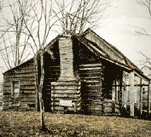

| Phoebe's Story | |
| Pioneer Experiences | |
| Gallery | |
| Bibliography | |
| Related Links | |
Created by Viktoria Sinex, Art of Local History, The Evergreen State College, Olympia, WA December 2003
|
Introduction: Pioneer Experience These families faced dangers They could not have imagined. If
they lived through the trip on the Oregon Trail, once in the Territory
they still faced wild animals, natives who felt intruded upon,
diseases that ruthlessly killed adults and children alike, and
the dangers involved in cutting down and disposing of the massive
trees that covered their parcels of land. |
||
